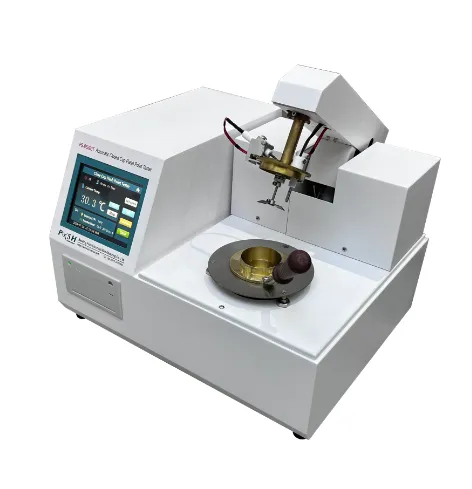TEL:
+86-0312-3189593
 English
English

Telephone:0312-3189593

Email:sales@oil-tester.com

-
 Afrikaans
Afrikaans -
 Albanian
Albanian -
 Amharic
Amharic -
 Arabic
Arabic -
 Armenian
Armenian -
 Azerbaijani
Azerbaijani -
 Basque
Basque -
 Belarusian
Belarusian -
 Bengali
Bengali -
 Bosnian
Bosnian -
 Bulgarian
Bulgarian -
 Catalan
Catalan -
 Cebuano
Cebuano -
 China
China -
 China (Taiwan)
China (Taiwan) -
 Corsican
Corsican -
 Croatian
Croatian -
 Czech
Czech -
 Danish
Danish -
 Dutch
Dutch -
 English
English -
 Esperanto
Esperanto -
 Estonian
Estonian -
 Finnish
Finnish -
 French
French -
 Frisian
Frisian -
 Galician
Galician -
 Georgian
Georgian -
 German
German -
 Greek
Greek -
 Gujarati
Gujarati -
 Haitian Creole
Haitian Creole -
 hausa
hausa -
 hawaiian
hawaiian -
 Hebrew
Hebrew -
 Hindi
Hindi -
 Miao
Miao -
 Hungarian
Hungarian -
 Icelandic
Icelandic -
 igbo
igbo -
 Indonesian
Indonesian -
 irish
irish -
 Italian
Italian -
 Japanese
Japanese -
 Javanese
Javanese -
 Kannada
Kannada -
 kazakh
kazakh -
 Khmer
Khmer -
 Rwandese
Rwandese -
 Korean
Korean -
 Kurdish
Kurdish -
 Kyrgyz
Kyrgyz -
 Lao
Lao -
 Latin
Latin -
 Latvian
Latvian -
 Lithuanian
Lithuanian -
 Luxembourgish
Luxembourgish -
 Macedonian
Macedonian -
 Malgashi
Malgashi -
 Malay
Malay -
 Malayalam
Malayalam -
 Maltese
Maltese -
 Maori
Maori -
 Marathi
Marathi -
 Mongolian
Mongolian -
 Myanmar
Myanmar -
 Nepali
Nepali -
 Norwegian
Norwegian -
 Norwegian
Norwegian -
 Occitan
Occitan -
 Pashto
Pashto -
 Persian
Persian -
 Polish
Polish -
 Portuguese
Portuguese -
 Punjabi
Punjabi -
 Romanian
Romanian -
 Russian
Russian -
 Samoan
Samoan -
 Scottish Gaelic
Scottish Gaelic -
 Serbian
Serbian -
 Sesotho
Sesotho -
 Shona
Shona -
 Sindhi
Sindhi -
 Sinhala
Sinhala -
 Slovak
Slovak -
 Slovenian
Slovenian -
 Somali
Somali -
 Spanish
Spanish -
 Sundanese
Sundanese -
 Swahili
Swahili -
 Swedish
Swedish -
 Tagalog
Tagalog -
 Tajik
Tajik -
 Tamil
Tamil -
 Tatar
Tatar -
 Telugu
Telugu -
 Thai
Thai -
 Turkish
Turkish -
 Turkmen
Turkmen -
 Ukrainian
Ukrainian -
 Urdu
Urdu -
 Uighur
Uighur -
 Uzbek
Uzbek -
 Vietnamese
Vietnamese -
 Welsh
Welsh -
 Bantu
Bantu -
 Yiddish
Yiddish -
 Yoruba
Yoruba -
 Zulu
Zulu
Ots . 12, 2025 01:41
Back to list
short circuit impedance of transformer
Conducting a short circuit impedance test is pivotal for ensuring the integrity and operational efficiency of electrical systems, particularly in transformers and switchgear. This process evaluates the impedance or opposition a device poses to a short circuit, a critical parameter that affects both system safety and reliability. Leveraging decades of field experience, I will navigate you through a comprehensive exploration of this essential evaluation, drawing from professional insights and trusted methodologies.
While executing these tests, seasoned engineers emphasize safety and adherence to procedural guidelines. Environmental considerations—temperature, humidity, and altitude—must be accounted for to eliminate their potential impact on test results. The trust in testing outcomes is heavily reliant on conducting tests under stable and controlled conditions. The choice of equipment is crucial. Cutting-edge technology requirements include single-phase and three-phase power supply compatibility, robust data recording capabilities, and user-friendly interfaces for complex analysis. This specialized field benefits from continual developments in testing equipment, with digital solutions offering better connectivity to enterprise systems and facilitating advanced analysis like trending and predictive maintenance. Ultimately, enterprises should prioritize regular short circuit impedance testing as part of a proactive maintenance regime. By establishing baseline metrics for performance and efficiency, companies can empower their operations with robust preventative strategies that minimize downtime, enhance operational safety, and extend equipment life expectancy. This nuanced focus aligns directly with industry best practices, meeting the growing demands for precision, reliability, and compliance. Capitalizing on collective expertise and fostering an environment of trust and safety through standardized testing equipment shapes the core of successful electrical system management. Such dedication not only underscores one's authority in the field but also reassures stakeholders of the enterprises' commitment to quality and operational excellence.


While executing these tests, seasoned engineers emphasize safety and adherence to procedural guidelines. Environmental considerations—temperature, humidity, and altitude—must be accounted for to eliminate their potential impact on test results. The trust in testing outcomes is heavily reliant on conducting tests under stable and controlled conditions. The choice of equipment is crucial. Cutting-edge technology requirements include single-phase and three-phase power supply compatibility, robust data recording capabilities, and user-friendly interfaces for complex analysis. This specialized field benefits from continual developments in testing equipment, with digital solutions offering better connectivity to enterprise systems and facilitating advanced analysis like trending and predictive maintenance. Ultimately, enterprises should prioritize regular short circuit impedance testing as part of a proactive maintenance regime. By establishing baseline metrics for performance and efficiency, companies can empower their operations with robust preventative strategies that minimize downtime, enhance operational safety, and extend equipment life expectancy. This nuanced focus aligns directly with industry best practices, meeting the growing demands for precision, reliability, and compliance. Capitalizing on collective expertise and fostering an environment of trust and safety through standardized testing equipment shapes the core of successful electrical system management. Such dedication not only underscores one's authority in the field but also reassures stakeholders of the enterprises' commitment to quality and operational excellence.
Previous:
Latest news
-
Testing Equipment Industry Sees Major Advancements in 2025: Smart & Precision Technologies Lead the WayNewsJun.06,2025
-
Applications of Direct Current Generators in Renewable Energy SystemsNewsJun.05,2025
-
Hipot Tester Calibration and Accuracy GuidelinesNewsJun.05,2025
-
Digital Circuit Breaker Analyzer Features and BenefitsNewsJun.05,2025
-
Benefits of Real-Time Power Quality Monitoring Devices for Industrial EfficiencyNewsJun.05,2025
-
Earth Fault Loop Testing in High-Rise Building Electrical SystemsNewsJun.05,2025



